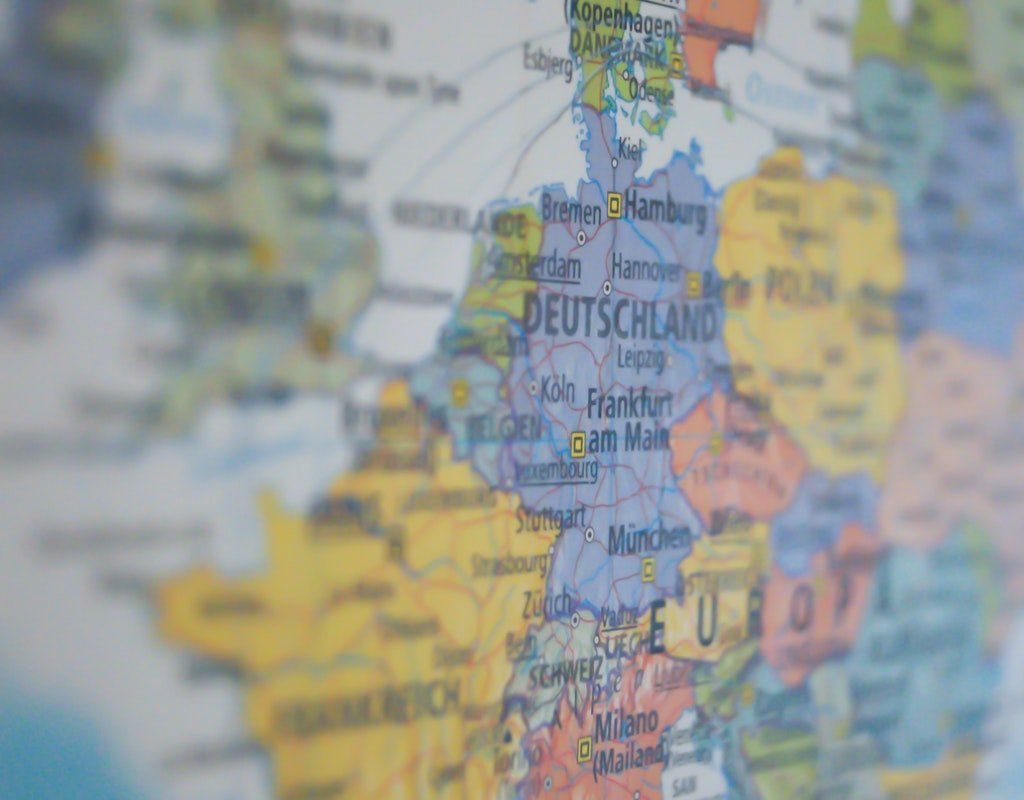
It’s undeniable that the recent move by EU Parliament to end geo-blocking is one that will benefit online consumers enormously. Customers will soon be able to shop like locals.
>Share this post<
by Michelle McSweeney
February 18, 2018
It’s undeniable that the recent move by EU Parliament to end geo-blocking is one that will benefit online consumers enormously. Customers will soon be able to shop like locals. This means no more being redirected when you try to purchase products outside of your home country website. No more being blocked at checkout because your form of payment or shipping address isn’t accepted. If I decide that I want to buy a pair of discounted designer jeans from a French website, despite the fact that I live in Ireland…well, there’s nothing stopping me from doing just that. Kadri Simson, Minister of Economic Affairs and Infrastructure of Estonia summed up the agreement, saying that “The end of unjustified geo-blocking will greatly enlarge the choice available to citizens when shopping online and will give a major boost to e-commerce. Consumers will be able to shop around for the best deals within the internal market.”
But what exactly does this mean for retailers? Considering that 63% of EU websites currently don’t let shoppers buy from another EU country, there’s no arguing that this new step towards a Single Digital Market will unlock the opportunity for businesses to grow on a massive scale.
However, entering a new market isn’t something that can happen overnight. So how can companies start to take the necessary steps towards cross-border trading? Here’s what Andy Mulcahy, Strategy and Insight Director at IMRG, the UK’s industry association for online retail recommends:
“Cross-border is a big focus for some retailers and it’s easy to understand why – get access to new markets, open up potential new revenue streams, shift out-of-season stock to a geographic location where the different climate means demand might be higher etc. But entering a new market requires a lot of work, research and resource if it is to be a genuine success, which means each one needs to be assessed to identify those that are worth putting sufficient focus on – as ‘doing cross-border’ can be a broad concept.
For example, it can make sense to take tentative steps at first and do as little as adapt your eCommerce site to accept international orders and payments – with the parcel sent out through the standard post, which might take a week or longer to arrive. That’s not a great experience for the customer and isn’t likely to grow volumes much, but it does just enough to work.
From there, it’s a matter of optimising areas of the experience where demand is evident – translating the site, working with local partners, doing specific marketing for that territory and customer. Cross-border can be straightforward or very complex – it’s all about understanding the scope of the opportunity and structuring your resource accordingly.”
Ultimately, there are three key areas that will have to be top of mind for all eCommerce brands as they navigate this brand new playing field – Technology, Business Organisation, and Legal.
But what exactly does this mean for retailers? Considering that 63% of EU websites currently don’t let shoppers buy from another EU country, there’s no arguing that this new step towards a Single Digital Market will unlock the opportunity for businesses to grow on a massive scale.
However, entering a new market isn’t something that can happen overnight. So how can companies start to take the necessary steps towards cross-border trading? Here’s what Andy Mulcahy, Strategy and Insight Director at IMRG, the UK’s industry association for online retail recommends:
“Cross-border is a big focus for some retailers and it’s easy to understand why – get access to new markets, open up potential new revenue streams, shift out-of-season stock to a geographic location where the different climate means demand might be higher etc. But entering a new market requires a lot of work, research and resource if it is to be a genuine success, which means each one needs to be assessed to identify those that are worth putting sufficient focus on – as ‘doing cross-border’ can be a broad concept.
For example, it can make sense to take tentative steps at first and do as little as adapt your eCommerce site to accept international orders and payments – with the parcel sent out through the standard post, which might take a week or longer to arrive. That’s not a great experience for the customer and isn’t likely to grow volumes much, but it does just enough to work.
From there, it’s a matter of optimising areas of the experience where demand is evident – translating the site, working with local partners, doing specific marketing for that territory and customer. Cross-border can be straightforward or very complex – it’s all about understanding the scope of the opportunity and structuring your resource accordingly.”
Ultimately, there are three key areas that will have to be top of mind for all eCommerce brands as they navigate this brand new playing field – Technology, Business Organisation, and Legal.
Technology
Being required by law to sell your products to all EU countries isn’t going to be as easy as slapping a couple of different currency options on your e-shop page and boom, you’re in business! The geo-blocking regulation means that companies will now have to split all of their sales by country, which is by no means an easy feat.Let’s say that you own a small online business in Ireland and you’ve been selling your products exclusively to the Irish market for a number of years. You’ve built up a significant customer database, and manage all aspects of the business yourself. But come December 2018, if someone that resides in Spain or Germany visits your website and wants to purchase your products, you need to have the appropriate technology and infrastructure in place to enable those transactions to be made. But maybe you don’t have an international shipping partner. Maybe your website has only been designed in English (a real problem, considering that 75% of shoppers want to be able to buy products in their native language). Perhaps you have no idea what the correct VAT rates are for each individual EU country. Where do you even begin?!
Unsurprisingly, the value of using an eCommerce platform is stronger than ever before. Take the Kooomo platform – it already has the built-in functionality to easily align with the geo-blocking requirements, as it supports multiple currencies, tax rates, and languages. Not only that, but it also allows users to easily integrate with online marketplaces such as eBay and Amazon, who aren’t going to be affected by the change as this is exactly what they are built to do – sell products across a number of different countries.
And it’s not just something that will have a major impact on small businesses either. What about all of the larger companies that have implemented an eCommerce platform, but are now discovering that it doesn’t have the technology required to make their products available to all EU countries? Do they now have to consider re-platforming?
Business Organisation
When it comes to the organisational unit of an eCommerce business, it’s clear to see that there are very few functions within companies that will remain unaffected by geo-blocking changes.Think about the marketing department of a company that sells its products online. Any online brand worth it's salt will have a full marketing plan set out for the following 12 months. Campaigns will be planned around sales periods and major holidays, as well as their own on and off-peak seasons. But unfortunately, there’s no ‘one size fits all’ plan when you’re going to be trading in all EU countries. Take Italy, for example. There are two official sales periods during the year in Italy – winter and summer when every shop can introduce clearance sales for 6-8 weeks maximum. Mid-season sales simply aren’t a ‘thing’ in Italy, however, they’re huge in Ireland and the UK. So do brands not promote their mid-season sales to an Italian audience? Do they go gung-ho and extend their winter and summer sales to try to increase their Italian audience? All of a sudden, that 12-month marketing plan which was seemingly set in stone is now a moveable feast.
Another consideration from an organisational point of view is the potential impact on omnichannel. If you’ve been trading in a single country where both online and offline stores have been synchronised and click and collect is an option for customers, you’ll have to readjust your inventory management strategy, not to mention your shipping methods and warehouse management. We all know that one of the biggest challenges for online retailers is optimising and maintaining stock. This certainly won’t make things any easier!
Legal
Let’s talk about VAT, shall we? VAT itself is a complex topic to wrap your head around, let alone master. We’ve already spoken about the challenge for companies to have to start splitting their sales by country. Not everyone has the knowledge or the tools to do this. In fact, an estimated €5 billion of VAT is currently lost on online sales every year. While the European Commission has welcomed an agreement to take a series of measures to improve how VAT works for online companies in the EU, those rules, unfortunately, won’t come into force until 2021, leaving a significant gap for businesses to fill.Throwing even more fuel on the fire is the looming deadline for GDPR compliance on 25th May 2018, where non-compliance could result in fines of up to 4% of annual turnover or up to €20 million (whichever is greater) for most serious infringements.
Right now, the topic of geo-blocking undoubtedly throws up more questions than it answers. Retailers in the EU may collectively be scratching their heads at the moment, but the reality of the situation is this – come Christmas 2018, consumers from any EU country will need to be able to purchase the products on your website. Online retail is about to open companies up to a wider audience than ever before. So the big question is whether or not your website is ready to take full advantage of the opportunity?
More to explore
Here’s an overview of the latest improvements that are now available in the Kooomo platform.
In the next few years, we are foreseeing an impressive increase for the global retail industry. While this can be beneficial for the global eCommerce industry, it also means that there will be more competition, as well.

 en
en 

